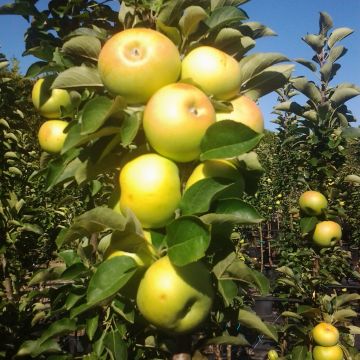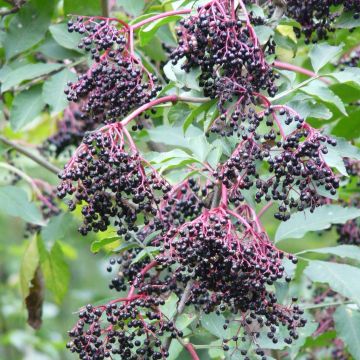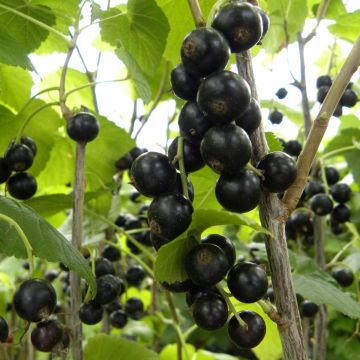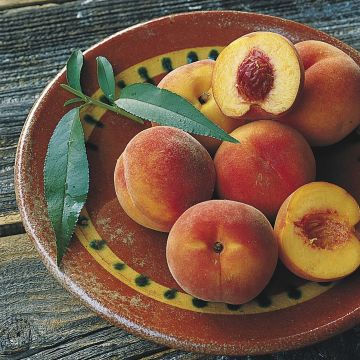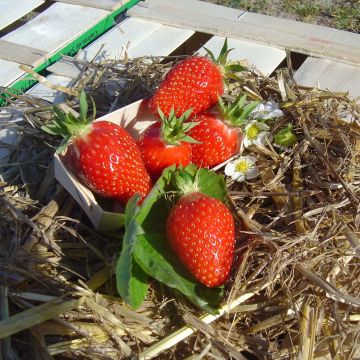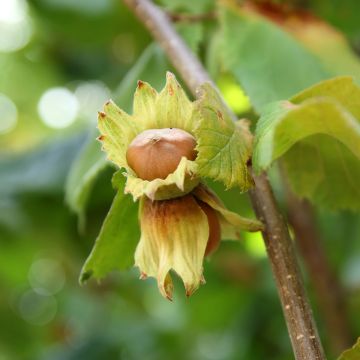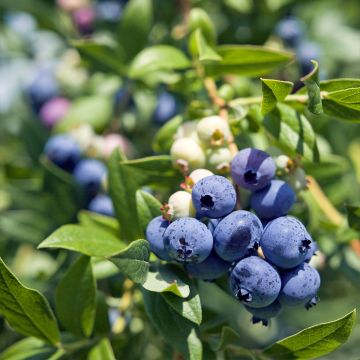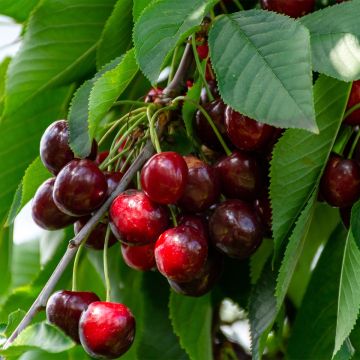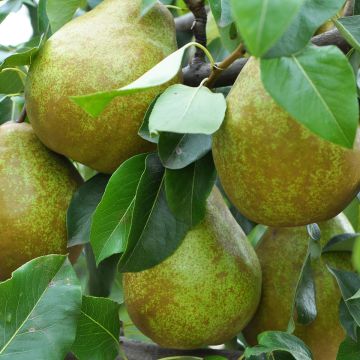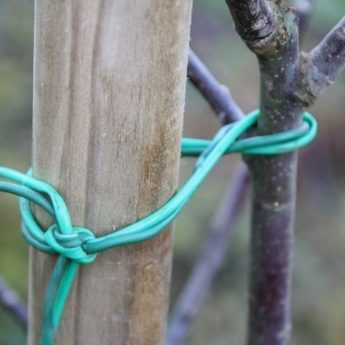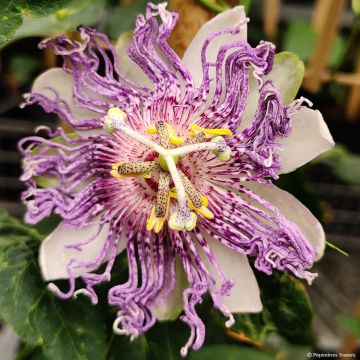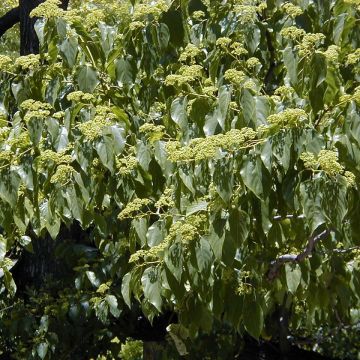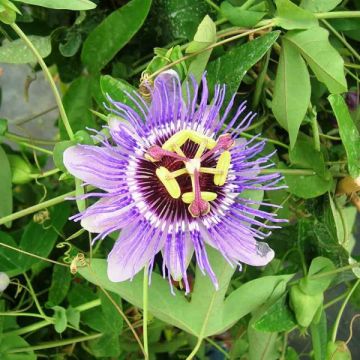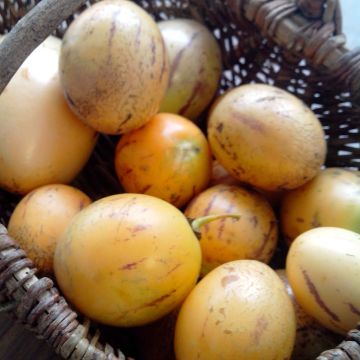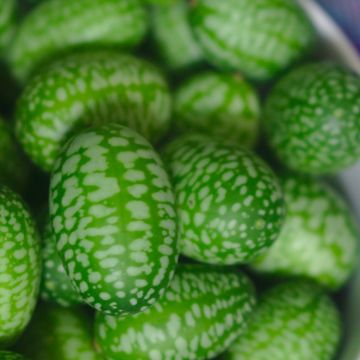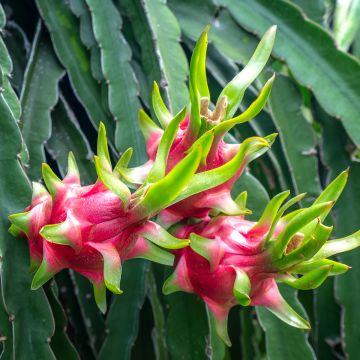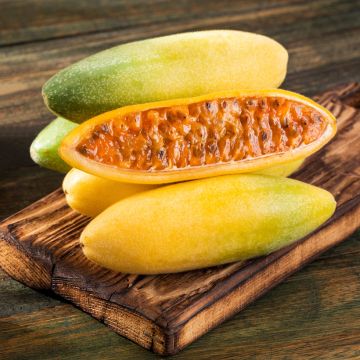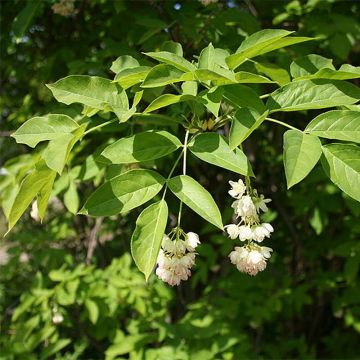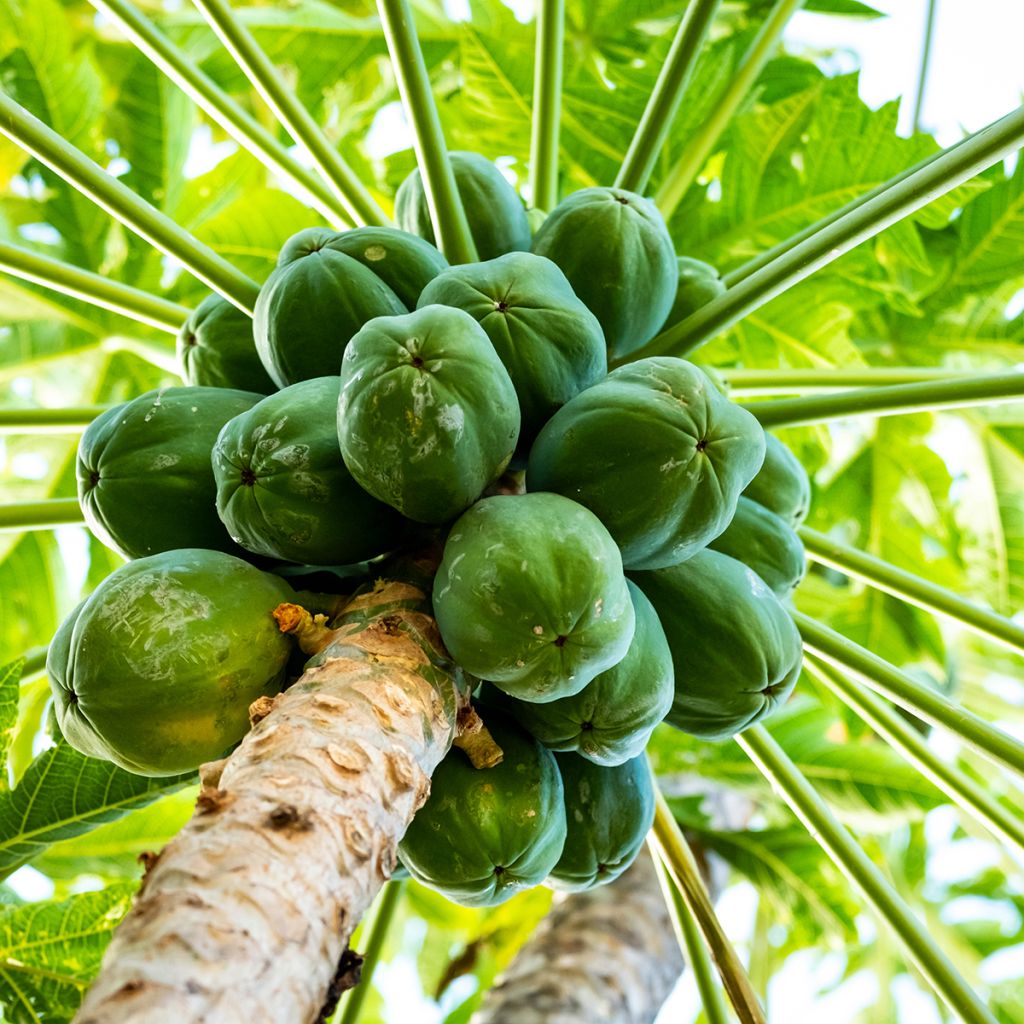

Carica papaya - Papaya
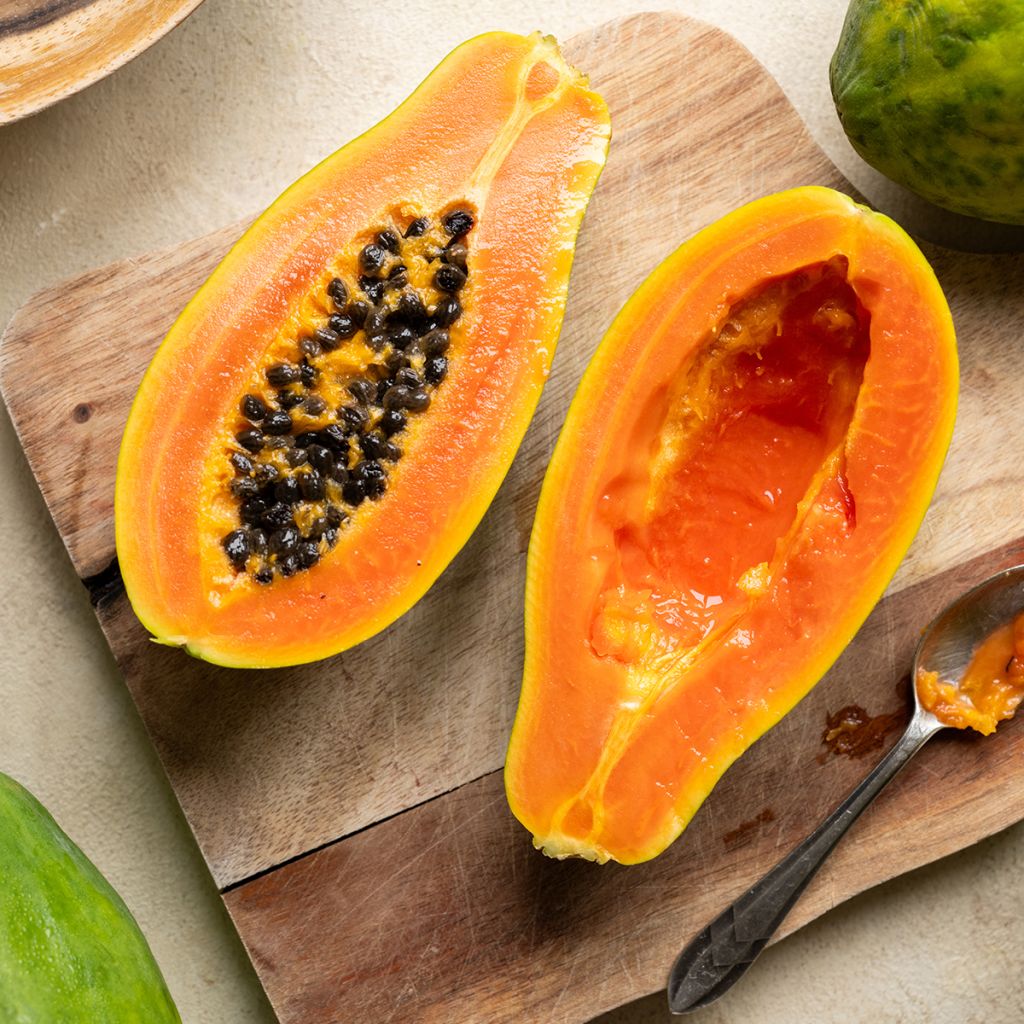

Carica papaya - Papaya
Carica papaya - Papaya
Carica papaya
Papaya, Pawpaw
Home or relay delivery (depending on size and destination)
Schedule delivery date,
and select date in basket
This plant carries a 6 months recovery warranty
More information
We guarantee the quality of our plants for a full growing cycle, and will replace at our expense any plant that fails to recover under normal climatic and planting conditions.
Description
The Carica papaya or Papaya tree is a small tropical fruit tree and a perennial arborescent with a single stem resembling a trunk. At the top, the evergreen foliage, green in colour, arranged in an umbrella shape, is composed of large divided leaves carried by long petioles. Its fruit, the papaya, is a sizeable ovoid berry which can weigh at least 1 kg. Growing papaya can be difficult as it is a plant that likes warm and humid environments with slight temperature variations. It can be planted in a greenhouse or conservatory and heated in winter, but do not expect it to bear fruit. It is, therefore, used as an exotic ornamental plant. The papaya can spend the summer outdoors in a sheltered, warm, and humid location.
The Carica papaya belongs to the Caricaceae family. It is native to Mexico and Central America and naturalised in Africa. It is often found in dense forests. It is a perennial arborescent with a single stem or trunk, with a minimum diameter of 20 cm, semi-woody, hollow, and striated, which can reach a height of 6 m in its natural habitat. A tuft of evergreen leaves, green in colour, forms a spreading canopy at its tip. They measure 50 to 70 cm long, are divided into deep lobes, and are carried by a long petiole. All year round, yellow-green flowers appear on the trunk, at the axil of the leaves. There are male and female plants, as well as hermaphrodite plants. The male flowers appear first and are carried by long, slender stalks, while the female flowers are larger and very close to the trunk. The fruit, the papaya, is a large berry, as it can measure up to 30 cm long and weigh up to a maximum of 5 kg. It develops against the trunk. The juicy, yellow or orange flesh is eaten, surrounding spicy-tasting black seeds covered with mucilage. Papayas are green and are harvested when they turn reddish-orange.
Fast-growing but with a short lifespan (between 4 and 7 years), this tropical plant does not exceed 3 to 5 m in a greenhouse, even less when grown in a pot or conservatory. It is solely an ornamental plant in our latitudes, cultivated in greenhouses and conservatories, at least temperate ones. Temperatures should be above 20°C during growth and between 15 and 20°C in winter. It is a plant that likes light and humidity, with regular air circulation but without drafts. Outdoors, papaya is cultivated in full sun with a minimum temperature of 10°C, and the temperature should never drop below 4°C. It should be sheltered from the wind and in a humid atmosphere, in a humus-bearing, rich, fertile, well-drained, fresh, and non-limestone soil.
Report an error about the product description
Plant habit
Fruit
Flowering
Foliage
Botanical data
Carica
papaya
Caricaceae
Papaya, Pawpaw
Carica peltata, Carica posoposa, Papaya carica
Central America
Other Fruit trees A to Z
View all →Planting and care
Carica papaya should be grown outdoors in summer, in full sun, at a minimum temperature of 10°C and never below 4°C. It should be planted in a moist, wind-free location, in humus-rich, fertile, well-drained, lime-free soil. Water and mulch regularly. This plant likes light and humidity, with regular air changes, but without draughts. So it thrives best in a heated greenhouse or conservatory, at least a temperate one. Temperatures should be above 20°C during the growing season (almost all year round) and between 15 and 20°C in winter. You can also try to acclimatise it like a subtropical plant by giving it rest periods in winter, considerably reducing watering and keeping it at a minimum temperature of 10°C, with fertilisation stopped. The environment must be humid, which means regular misting, especially when the air is dry, and the weather is hot.
Planting period
Intended location
Care
Planting & care advice
This item has not been reviewed yet - be the first to leave a review about it.
Similar products
Haven't found what you were looking for?
Hardiness is the lowest winter temperature a plant can endure without suffering serious damage or even dying. However, hardiness is affected by location (a sheltered area, such as a patio), protection (winter cover) and soil type (hardiness is improved by well-drained soil).

Photo Sharing Terms & Conditions
In order to encourage gardeners to interact and share their experiences, Promesse de fleurs offers various media enabling content to be uploaded onto its Site - in particular via the ‘Photo sharing’ module.
The User agrees to refrain from:
- Posting any content that is illegal, prejudicial, insulting, racist, inciteful to hatred, revisionist, contrary to public decency, that infringes on privacy or on the privacy rights of third parties, in particular the publicity rights of persons and goods, intellectual property rights, or the right to privacy.
- Submitting content on behalf of a third party;
- Impersonate the identity of a third party and/or publish any personal information about a third party;
In general, the User undertakes to refrain from any unethical behaviour.
All Content (in particular text, comments, files, images, photos, videos, creative works, etc.), which may be subject to property or intellectual property rights, image or other private rights, shall remain the property of the User, subject to the limited rights granted by the terms of the licence granted by Promesse de fleurs as stated below. Users are at liberty to publish or not to publish such Content on the Site, notably via the ‘Photo Sharing’ facility, and accept that this Content shall be made public and freely accessible, notably on the Internet.
Users further acknowledge, undertake to have ,and guarantee that they hold all necessary rights and permissions to publish such material on the Site, in particular with regard to the legislation in force pertaining to any privacy, property, intellectual property, image, or contractual rights, or rights of any other nature. By publishing such Content on the Site, Users acknowledge accepting full liability as publishers of the Content within the meaning of the law, and grant Promesse de fleurs, free of charge, an inclusive, worldwide licence for the said Content for the entire duration of its publication, including all reproduction, representation, up/downloading, displaying, performing, transmission, and storage rights.
Users also grant permission for their name to be linked to the Content and accept that this link may not always be made available.
By engaging in posting material, Users consent to their Content becoming automatically accessible on the Internet, in particular on other sites and/or blogs and/or web pages of the Promesse de fleurs site, including in particular social pages and the Promesse de fleurs catalogue.
Users may secure the removal of entrusted content free of charge by issuing a simple request via our contact form.
The flowering period indicated on our website applies to countries and regions located in USDA zone 8 (France, the United Kingdom, Ireland, the Netherlands, etc.)
It will vary according to where you live:
- In zones 9 to 10 (Italy, Spain, Greece, etc.), flowering will occur about 2 to 4 weeks earlier.
- In zones 6 to 7 (Germany, Poland, Slovenia, and lower mountainous regions), flowering will be delayed by 2 to 3 weeks.
- In zone 5 (Central Europe, Scandinavia), blooming will be delayed by 3 to 5 weeks.
In temperate climates, pruning of spring-flowering shrubs (forsythia, spireas, etc.) should be done just after flowering.
Pruning of summer-flowering shrubs (Indian Lilac, Perovskia, etc.) can be done in winter or spring.
In cold regions as well as with frost-sensitive plants, avoid pruning too early when severe frosts may still occur.
The planting period indicated on our website applies to countries and regions located in USDA zone 8 (France, United Kingdom, Ireland, Netherlands).
It will vary according to where you live:
- In Mediterranean zones (Marseille, Madrid, Milan, etc.), autumn and winter are the best planting periods.
- In continental zones (Strasbourg, Munich, Vienna, etc.), delay planting by 2 to 3 weeks in spring and bring it forward by 2 to 4 weeks in autumn.
- In mountainous regions (the Alps, Pyrenees, Carpathians, etc.), it is best to plant in late spring (May-June) or late summer (August-September).
The harvesting period indicated on our website applies to countries and regions in USDA zone 8 (France, England, Ireland, the Netherlands).
In colder areas (Scandinavia, Poland, Austria...) fruit and vegetable harvests are likely to be delayed by 3-4 weeks.
In warmer areas (Italy, Spain, Greece, etc.), harvesting will probably take place earlier, depending on weather conditions.
The sowing periods indicated on our website apply to countries and regions within USDA Zone 8 (France, UK, Ireland, Netherlands).
In colder areas (Scandinavia, Poland, Austria...), delay any outdoor sowing by 3-4 weeks, or sow under glass.
In warmer climes (Italy, Spain, Greece, etc.), bring outdoor sowing forward by a few weeks.



































